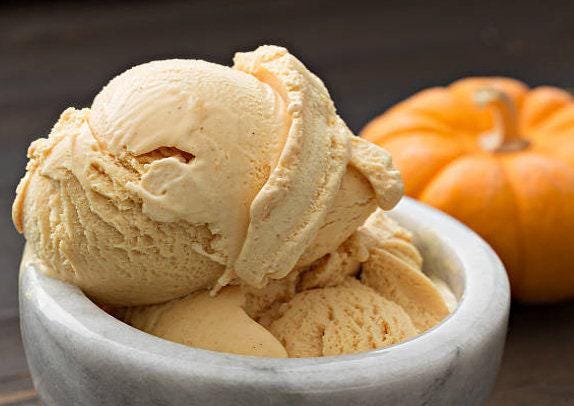The Go-To Choice For Pumpkin Pie Since The 1860's! Sugar Pie has graced the tables and fields of farmers in New England for centuries. Easy to grow and a vigorous producer of fruit that has thick, fine-grained, exceedingly sweet flesh. Early sugar are fantastic in pie! Creamy, fluffy, pumpkiny, buttery flesh, versatile in sweet and savory recipes. The richness of the flavor and the extraordinary sweetness really stand up to baking, making this the ultimate pumpkin for pies or breads. Also perfect for canning.
100 days. Bright orange, slightly ribbed fruit will weigh about 4-6 lbs. and average 6-8" in diameter; perfect size for a pie or two. These plants will put out sprawling vine and are fairly hardy, but plant considerately as pumpkins do not like their vines moved or stepped on much. If you live in a short growing season, picked green these will ripen beautifully in storage.
Some of its many synonyms: 'Boston Golden Sugar', 'Boston Pie', 'Early Small Sugar', 'Early Sugar', Golden Sugar', 'Prolific Sugar', Rhode Island Sugar', and 'Yum Yum'.
Described by Fearing Burr (famous Seedsman) in 1863 as:
". . . flesh of good thickness, light yellow, fine-grained, sweet and well flavored . . . The variety is the smallest of the sorts used for field cultivation. It is, however, a most abundant bearer, rarely fails in maturing its crops perfectly, is of first-rate quality, and may be justly styled an acquisition. For pies, it is not surpassed by any of the family; and it is superior for table use to many of the garden squashes."
~ planting ~
Gardeners with short growing seasons may want to start their pumpkin seeds indoors a month before the last expected frost. Since pumpkins do not take well to transplanting, peat pots are the best option. Plant two seeds per pot, later clipping off the weaker seedling. Harden the seedlings by exposing them to the weather for several hours at a time during the week before transplanting. About a week after the last frost or when the soil temperature reaches an average of 60 degrees F, plant the seedlings in very rich soil 8-10' apart in rows 10-12' apart. Another option is to plant the seedlings in hills of two, 8-10' apart. To direct sow, plant the seeds a week after frost 1/2" deep, 3-4' apart and thin to 8-10' apart. For companion planting benefits, plant pumpkins along with corn but avoid planting them with potatoes.
Since pumpkin seedlings do not tolerate frost, provide protective coverings if cold weather threatens. Keep the soil moist at all times, but avoid getting the leaves wet as this can cause diseases such as rot or mildew. When the vines begin to develop, a layer of mulch will help conserve moisture and control weeds; mulch also will keep the pumpkins clean and protect them from too much soil contact. By midsummer, pinch off all the blooms to concentrate the plant's energy on the developing pumpkins.
~ harvesting ~
Harvest pumpkins before the first fall frost, and when foliage has begun to dry out. Cut stem with a knife, leaving 3" - 4" of stem on the pumpkin. Do not hold the pumpkin by the stem; if stem attachment gets broken, or any part of the pumpkin bruises, the pumpkin will rot. Brush off any dirt or leaves. Cure in a sunny window or porch at 75-80° F for 1-2 weeks before eating or storage. Do not allow harvested fruit to get wet.



















